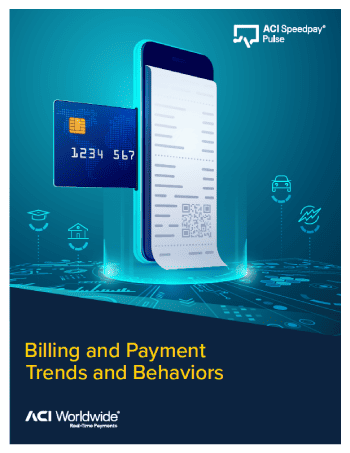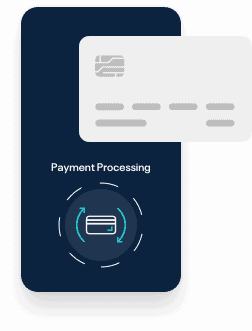Industry Guide
Customer Financing
Customer financing enables consumers to finance purchases through easy installment repayment plans. Learn more about offering financing to customers here
On This Page
What is customer financing?
Customer financing — also known as point-of-sale financing — refers to any form of payment plan that enables customers to pay for purchases in installments, rather than up front.
There are two types of customer financing:
- Primary financing, which includes traditional financing options such as loans and credit cards
- Secondary financing, which includes lease-to-own and installment loans
Merchants and billers can either set up and manage repayment plans on their own through what’s known as in-house customer financing, or work with third-party financing companies to approve customer credit and keep track of monthly repayments.
Whether in-house or third-party, merchants and billers typically offer customer financing on more expensive items as a means of incentivizing customers to complete purchases. However, they can also extend financing to lower-priced items. Offering customer financing also opens the door to more buyers, as even customers who do not have credit cards can obtain affordable financing. As a result, customer financing has become popular across a wide range of industries, including retail, healthcare, veterinary care, home repair and improvement, automotive repair and travel.
Primary Financing:
Secondary Financing:
How does customer financing work?
Customer financing works in much the same way as any other form of financing. A typical transaction with a merchant or biller that offers financing to its customers would look something like this:
- A customer goes to purchase a product or pay a bill. During the transaction, they select financing as their payment method.
- The customer then applies for financing by filling out a form through a digital portal (either on their personal computer, their smartphone or an in-store terminal).
- The application form will include fields for standard information, such as the applicant’s name, contact information and social security number, and financial details, such as their income, employment history and monthly expenses. This information is intended to help the lender determine the applicant’s ability to make monthly repayments. The form might also include additional questions about the desired financing amount, its purpose, the customer’s preferred payment terms and a credit check authorization granting the lender permission to assess the applicant’s credit report.
- Once completed, the form is automatically sent to a financial institution for review. This institution — the prospective lender — will evaluate the customer’s creditworthiness and either approve or deny financing for the transaction.
- If the lender approves the customer’s application, it automatically sends the necessary funds to complete the transaction directly to the merchant or biller.
- Per the terms of the financing agreement, the customer makes regular repayments to the lender over the agreed-upon period.
What are some common examples of customer financing?
Two of the most well-known examples of customer financing are store credit and buy now, pay later (BNPL).
With store credit, merchants or billers offer their customers a monetary value — often in place of a refund when a customer returns an item or as a reward for participating in a loyalty program — which customers can then redeem for future purchases. Although store credit isn’t a type of repayment plan, it’s still considered a form of customer financing because it involves offering customers the ability to make purchases without paying the full amount up front.
BNPL, on the other hand, is exactly what it sounds like: a repayment plan that enables customers to make a purchase but pay for it at a later date. A form of short-term financing, most BNPL offerings are structured as interest-free installment loans in which customers pay for purchases in a series of equal installments — starting with the initial purchase — over a predetermined period of time.

What is driving the acceleration of customer financing?
Although customer financing isn’t a new concept — personal finance loans have existed for well over a century — the advent of BNPL for online shopping and online bill payments has accelerated its adoption. Juniper Research anticipates the total number of BNPL users will surpass 900 million globally by 2027 — and that figure will continue to grow from there.
There are a variety of factors behind the growing demand for customer financing, including:
Economic uncertainty
From the economic fallout of the COVID-19 pandemic to rising inflation, the past few years have been marked by economic uncertainty on a global scale. In the face of this financial instability, consumers are seeking more flexible payment options when purchasing goods and paying bills. By enabling them to make payments in installments, customer financing offers a financial safety net to those who might be otherwise hesitant to spend in uncertain times.

Changing consumer demographics
Although Baby Boomers continue to have the most spending power, millennials and Gen Zers are hot on their heels. With changing consumer demographics comes changing expectations. Younger generations, which are more accustomed to subscription models, monthly payments and installment plans expect both merchants and billers to offer payment options that align with their spending habits — something that customer financing achieves.
Growing competition
Thanks to globalization and technology, consumers now have the ability to patronize businesses in almost any geographic region, regardless of their physical location. This has created more competitive market conditions for both merchants and billers and prompted new initiatives to optimize the customer experience. Customer financing delivers on the convenience and flexibility consumers are looking for and is well-suited to eCommerce, making it a value-added service that can give merchants and billers a competitive edge.
What are the potential benefits and drawbacks to offering customer financing?
There are many ways in which merchants and billers stand to benefit from offering financing to their customers. First and foremost, customer financing expands a merchant’s or biller’s potential customer base by making their products accessible to a broader audience at an affordable rate. This is especially true for merchants that sell high-value items that might otherwise be out of reach for customers within a certain income bracket, though it also applies to lower-priced items, as well.
Because customer financing makes products more affordable to a wider range of buyers, it has the ability to increase both customer conversion rates and average order values, generating additional revenue for merchants. From a biller’s perspective, based on the way repayment plans are structured, customer financing reduces the risk of non-payment. Finally, customer financing enables merchants and billers to satisfy consumer demand for more payment methods, giving them a competitive edge in a crowded market.
As with any major decision, it’s important that merchants and billers weigh not only the benefits but also the potential drawbacks before implementing customer financing. While customer financing can help organizations grow their customer base, there’s no guarantee that buyers will be able to make consistent payments. This is a particular issue for merchants and billers that offer in-house financing, as outstanding debts can cut into profit margins and negatively affect cash flow. Many organizations try to solve for this problem by adding headcount to their accounts payable departments, specifically for tracking and collecting payments, though this introduces additional staffing costs.
Organizations looking to offset these risks may consider third-party financing, these services come at a cost and may be subject to additional fees.
While the advantages of offering customer financing far exceed the disadvantages, it’s essential that merchants and billers conduct a thorough analysis of their financial capabilities, risk tolerance and long-term goals. By carefully evaluating the potential benefits against the associated risks and costs, they can make an informed decision that aligns with their strategic objectives and contributes to sustainable growth.

What else should I know before offering customer financing?
In addition to weighing the benefits of customer financing against its drawbacks, the following consideration should also factor into an organization’s decision whether to offer customer financing:
- Can our customers qualify for financing?
- Will our customers actually use financing?
- What types of financing options do we want to offer?
- How will customer financing impact our cash flow?
- Should we enforce spending limits on customer financing?
- Are we able to accept the risks that come with customer financing?
- Is it more cost-effective to offer in-house or third-party financing?
- Will we be able to extend in-house financing across all channels, or would we be better served by working with a third-party financing company?
How can I offer financing to my customers?
Merchants and billers have the option to set up either in-house financing or third-party financing. As a reminder, in-house financing refers to when a company sets up and manages repayment plans on its own, while third-party financing is when a company outsources financing to an external service provider. Each option requires a slightly different approach to implementation.
In-house financing
Once you’ve evaluated the potential financial impact of offering in-house financing and determined that it is not only feasible, but to your advantage, you must do the following:
- Familiarize yourself with any legal and regulatory requirements that apply to customer financing within your jurisdiction
- Determine the resources you need to allocate for implementation and ongoing management
- Set up the necessary infrastructure to manage your financing program, including software, databases and payment processing systems
- Develop risk management strategies to address potential defaults or nonpayment and determine how to handle delinquent accounts and collections
- Define financing terms, including interest rates, payment periods and eligibility criteria
- Draft detailed financial agreements that outline terms and conditions for customers; these documents should include all legal requirements and disclosures
- Develop a credit assessment process for evaluating the creditworthiness of applicants and associated acceptance criteria
- Design a straightforward application process that customers can use to apply for financing both online and in-store
- Integrate financing with all of your sales channels
- Create educational materials to help customers understand financing options, terms and repayment obligations; be transparent about interest rates, fees and the implications of nonpayment
- Develop marketing materials to promote your in-house financing options to prospective customers
- Create a dedicated customer support channel for customers to ask questions, raise concerns and resolve issues related to financing
Third-party financing
Setting up third-party financing is comparatively simple, in no small part because you’re effectively outsourcing implementation and management to a third-party provider. Once you’ve selected and contracted a suitable provider — one capable of meeting your specific financing needs and aligning with your business goals — you’ll need to work with their technical team to integrate financing with all of your sales channels. This typically involves implementing application programming interfaces (APIs) or plugins and establishing connections to streamline the payments process.
The rest of the implementation process is fairly straightforward and similar to that of in-house financing. You’ll need to work with your provider to design an intuitive application process so that it’s easy for your customers to apply for financing. Creating educational materials for customers is a key part of this. You’ll also want to market your new financing options to customers and ensure your support team is equipped to handle any and all customer inquiries.
What are some popular third-party financing solutions?
How does ACI Worldwide support customer financing?
Whether you choose to implement in-house or third-party financing, ACI PayAfter — part of the ACI Payments Orchestration Platform — enables you to connect with more than 70 lenders through a single, API-driven integration. With access to more lenders, your customers can apply to multiple lenders through a single credit application, increasing their credit approval rates and boosting your checkout conversion rates.

